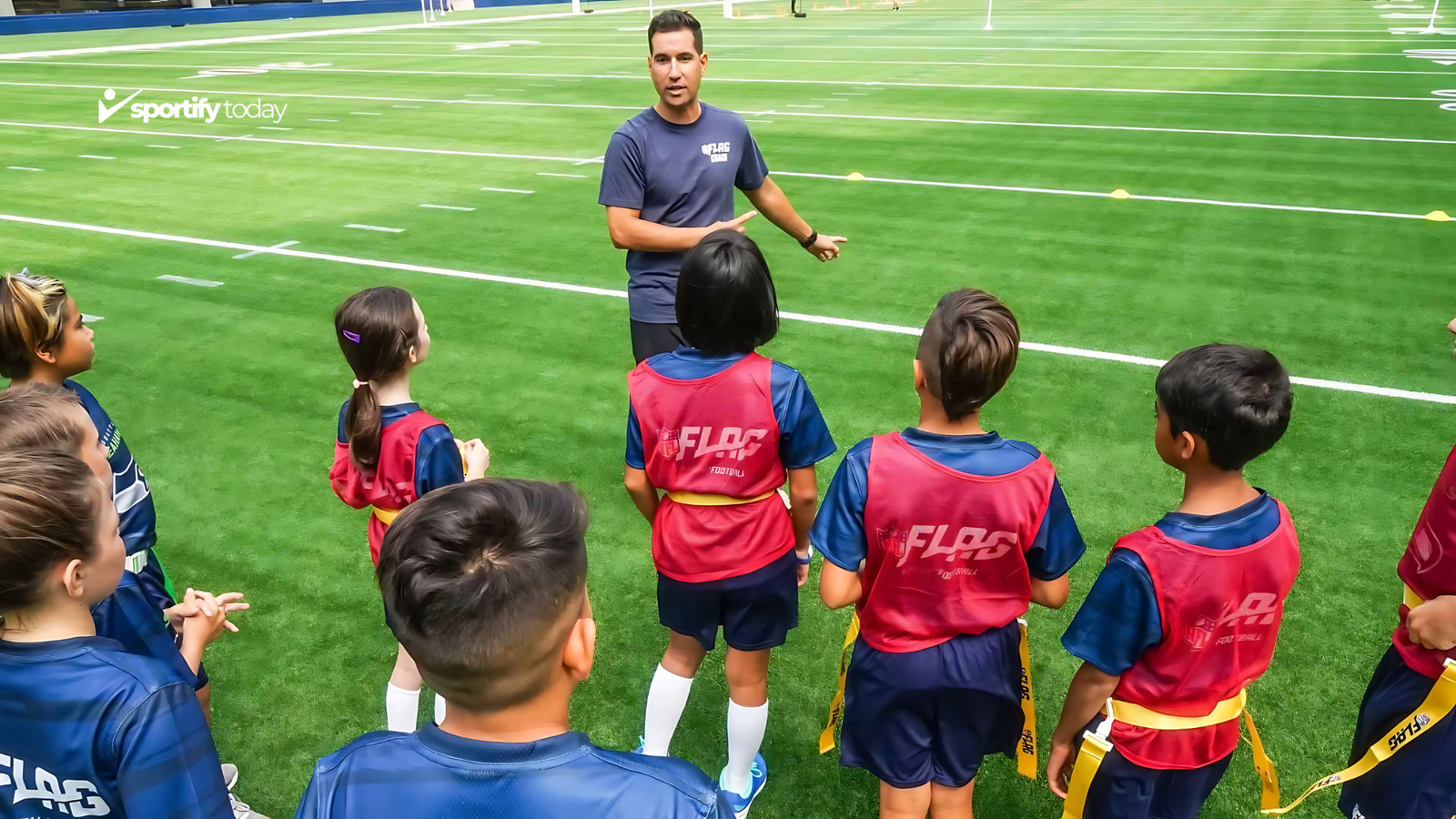
Introduction: For one to be a Football Position Chart, a coach or even a mere team supporter for that matter, probable the most crucial aspect they need to be conversant with is on the likelihood of positions.
Both the ones have depicted roles that are corporate team members who have positions that include activities that are applicable to the general strategic plan of the team and goals. For the purpose of broadening the position chart in the above tooled football formation, here is an indication of the major football positions, and what their tasks are.
Position Chart Summary

| Position | Abbreviation | Role Description |
|---|---|---|
| Goalkeeper | GK | Last line of defense, stops shots on goal |
| Right Back | RB | Defends right flank, supports attack |
| Center Back | CB | Central defender, blocks opposing attackers |
| Left Back | LB | Defends left flank, supports attack |
| Defensive Midfielder | CDM | Protects defense, breaks up opposition plays |
| Central Midfielder | CM | Links defense and attack, controls tempo |
| Attacking Midfielder | CAM | Creates goal opportunities, assists forwards |
| Right Winger | RW | Attacks from the right, delivers crosses |
| Left Winger | LW | Attacks from the left, creates chances |
| Center Forward | CF | Main goal scorer, holds up play |
| Striker | ST | Primary goal scorer, finishes chances |
1. Goalkeeper (GK)

The last of them is the fourth man in the defense and the goalkeeper, this performer of the team should in any way ensure that the ball is not in his half of the field whether this is in between the middle line or any line that would the half of the field diagonally but in any way it has to be in the half of the opponents’ field. They also have the great pleasure of acting as the defending wall and waving to other players as well as reinstate an attack with a good pass.
Role: The last row here is reserved for players who I believe should be equally lucky so that the other team does not make goals on the field.
Major Responsibilities:
Save shots on goal using any part of their body.
Organize the defense and communicate with defenders.
Distribute the ball effectively to start attacks.
2. Right Back (RB)
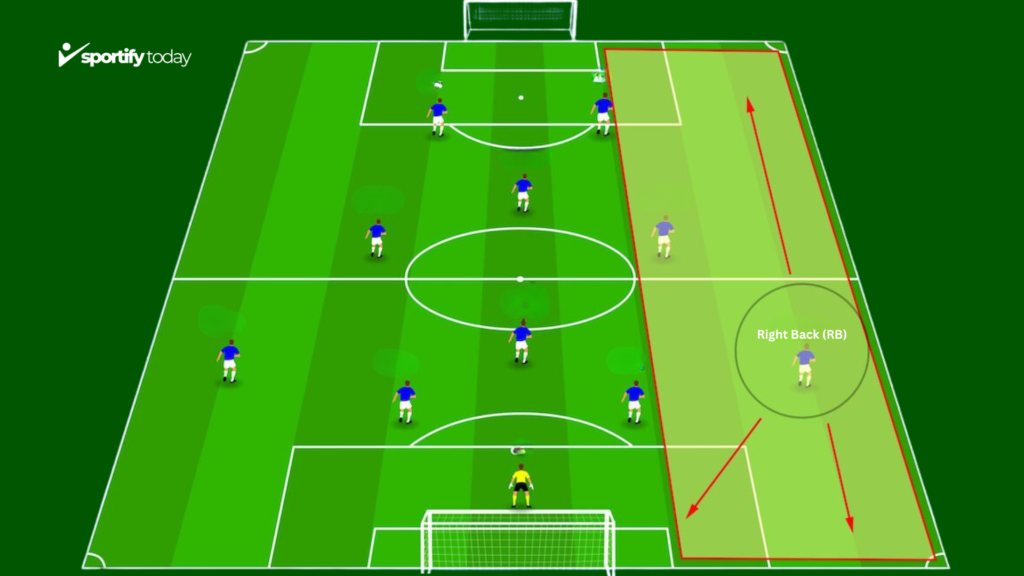
The RB should be positioned right at the far end of the strikers and the basic operation of the player is to restrict the activities of players in the over line of wingers. Besides the defensives, they assist the attack function by coming in parallel with right midfielder or winger to make cross into the opponent’s penalty area.
Role: It is positioned at the right end of the defense, and mainly used to surveillance antagonistic teams’ wingers.
Major Responsibilities:
Mark and tackle opposing players on the right flank.
Support the attack by overlapping with the right midfielder or winger.
Deliver crosses into the opponent’s penalty area.
3. Center Back (CB)
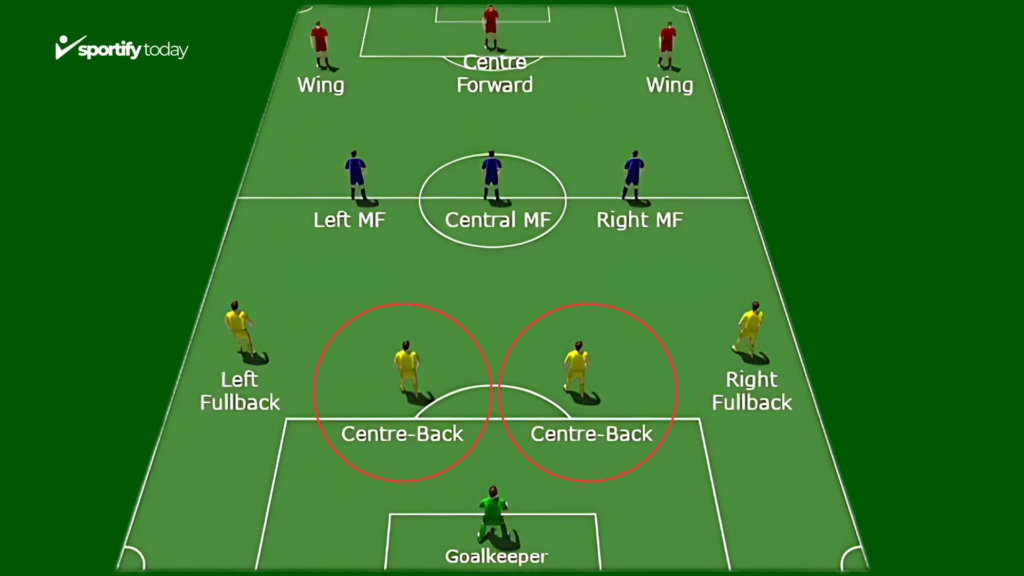
They have a large part hence listing in the formation of the defensive barrier, the positioning at the opponent side to defend and charge in the aerial battle important predominantly, thus in the act of the ball transition and the strengthening of the backline of the team chief difficulties.
Role: It is useful in making calls for the formation of the defense in order to combat the opponents in such cases as manufacturing aerial battles including from the half open style to took possession of the ball in addition to normal patting.
Major Responsibilities:
Mark strikers and win aerial duels during set pieces.
Clear the ball from the defensive zone.
Organize the defensive unit and communicate with teammates.
4. Left Back (LB)

LB is a defensive formation at the left of the defense line which primary responsibility is to prevent the opponents from passing the ball through the left channel. Besides that, they support the offence of their team by putting pressure to left midfielders or wingers when giving crosses from the attack bands.
Role: Takes up a position to the left side of the defense like the right back or central right back.
Major Responsibilities
Takes up a position to the left side of the defense like the right back or central right back.
Support the attack by overlapping with the left midfielder or winger.
Deliver crosses and provide width to the team’s attack.
5. Defensive Midfielder (CDM)

This is why they must apply pressure to stop the opponents because they need the ball, to pressurize them into their half and or to discourage them from using the central area of the field and reorganizing at the end of the field or the field right in front of the midfield line by passing it to the forwards as well as other midfielders.
Role: Reasonably positioned mainly ahead of the basic tactical defense front utilized in countering the furtherance of the rivals.
Major Responsibilities
This is because when the opponents are choosing for high balls or pressing up high the back line is vacant this time
Distribute the ball to more advanced midfielders and forwards.
Provide cover for defenders during counter-attacks.
6. Central Midfielder (CM)
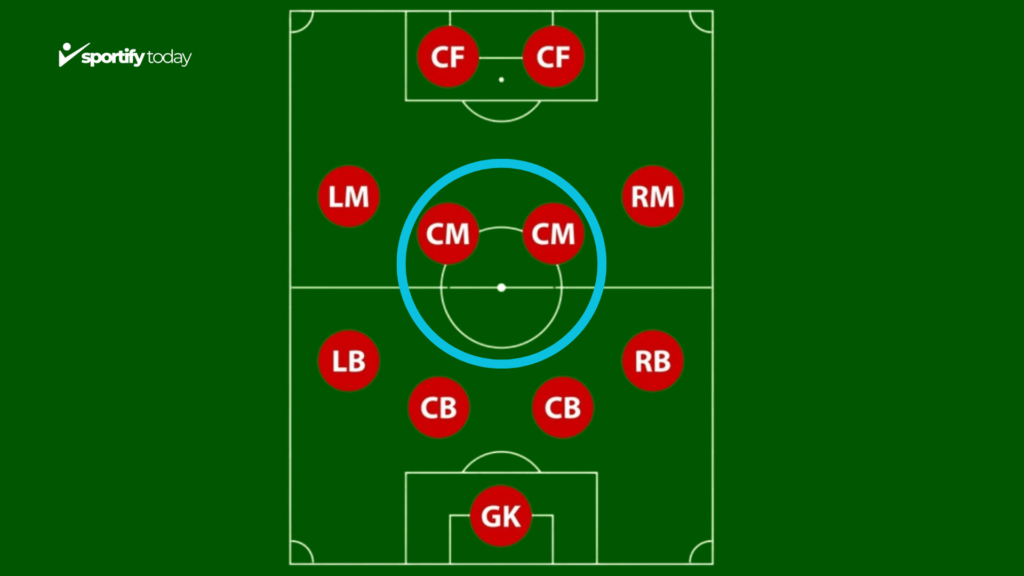
Thus in formation also there is some special position like the central midfielder (CM) he is also the person, who plays middle of the play ground, but he has to perform both attacking as well as the defending duty in the game. They decide everything; determine the image of the style when stalking the formation of the corners and dangerous positions and understand the formation of defense and attack.
Role: Standing somewhat forward and amidships, ‘tis the link between the defense and offense.
Major Responsibilities:
Control the tempo of the game and dictate play.
Support both defensive and attacking phases of the game.
Distribute the ball effectively to wingers and forwards.
7. Attacking Midfielder (CAM)
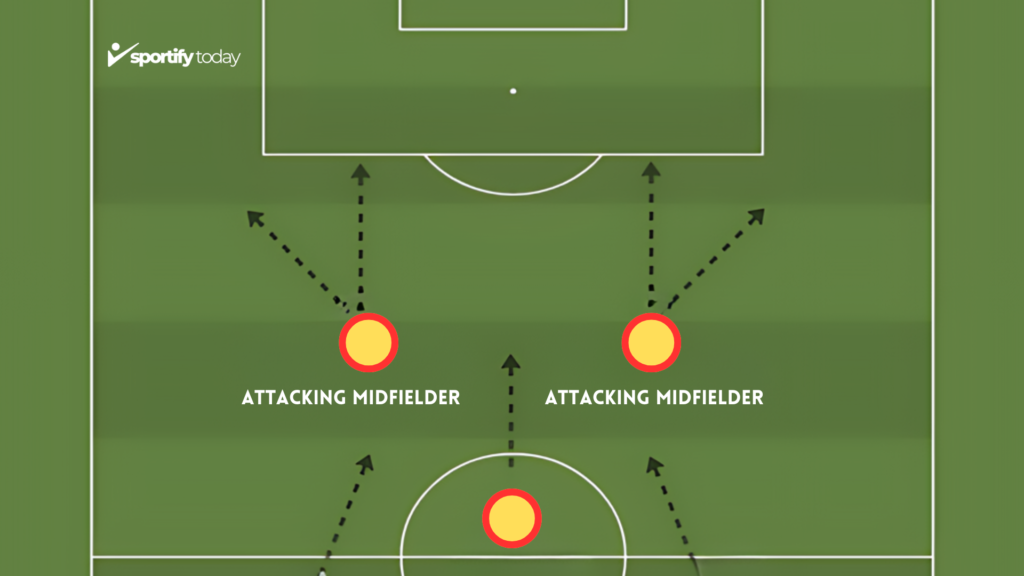
CAM is located close to the forwards because because of CAM’s presence it means that he is as involved as possible in creating as many opportunities for goal scoring as possible and creating as many more opportunities for assists as possible. But there are some roles which are very good in this regard as; space searching in the half of the opponents’ team, attempt to goal, and in the passing role between the section of midfield and forwards in the form of an attack in the team.
Role: Positioned closer to the forwards, focusing on creating goal-scoring opportunities.
Major Responsibilities:
Provide assists to strikers and wingers.
Take shots on goal from outside the box.
Link play between midfield and attack, finding space in the opposition’s defense.
8. Right Winger (RW)

As mentioned, the primary role of a right winger is to take the corner of the right side of the pitch and place himself where he synthesizes a goal. They use it to make with defenders in order to find space for themselves or to add the third dimension to a team’s attacking lineup apart from sliding across the by-line to shoot or involve other players.
Role: Right winger, but the primary of the position is to position himself for crossing and opening up shooting possibilities.
Major Responsibilities:
Beat defenders in one-on-one situations.
Provide width to the attack and stretch the opponent’s defense.
Cut inside to take shots or create opportunities for teammates.
9. Left Winger (LW)
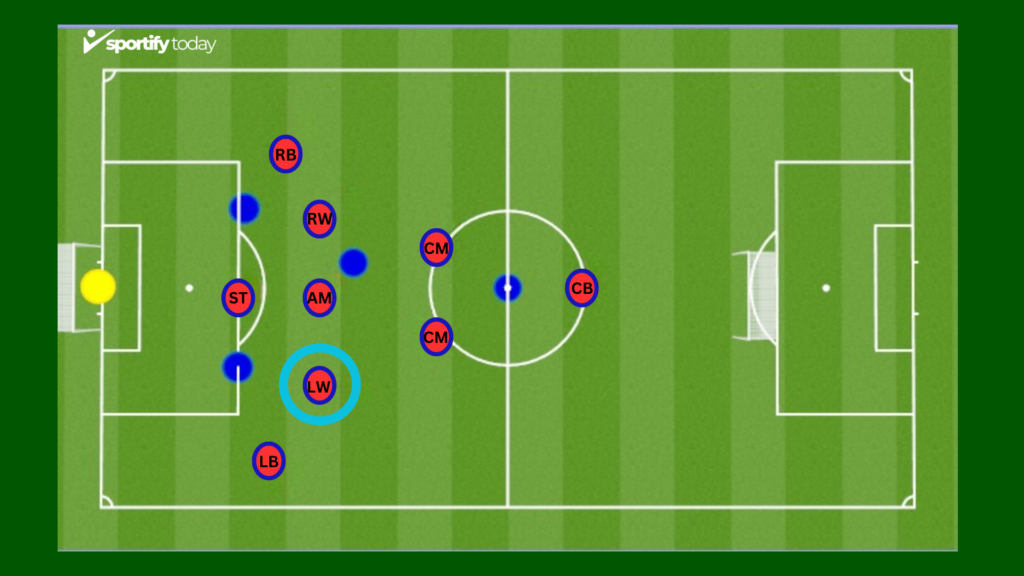
They are on the left flank, like that of a right winger. They attack from the left side and deliver crosses into the box and beat defenders in one-on-one situations and cut inside to take shots or give opportunities for the strikers.
Role: Positioned on the left flank like that of a right winger.
Major Responsibilities:
Attack from the left side, delivering crosses into the box.
Beat defenders and create goal-scoring opportunities.
Cut inside to take shots or assist strikers.
10. Center Forward (CF)
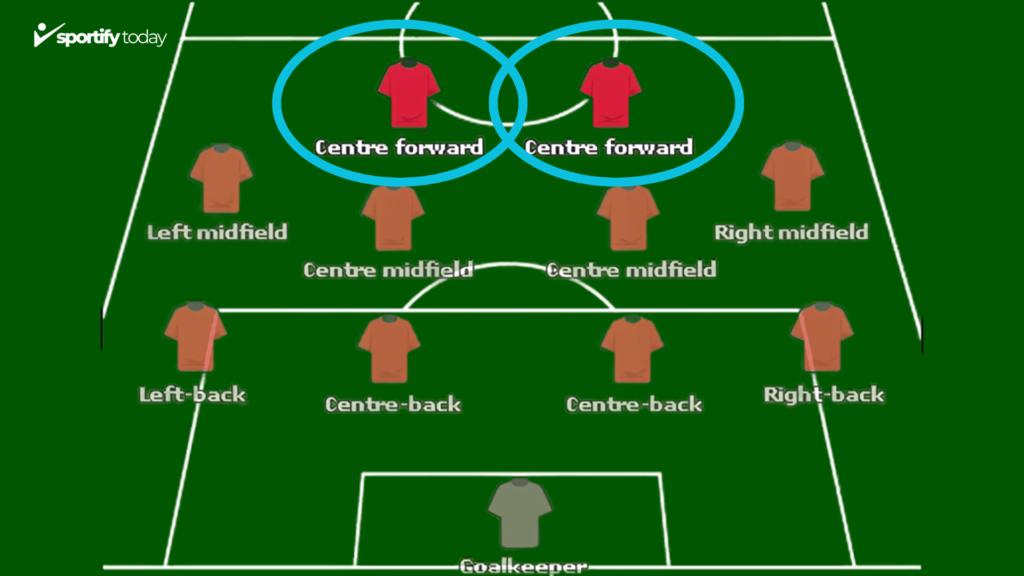
Centre forward or Centre forward position in the attackers formation is positioned middle in the team and the responsibilities involve that of scoring goals in the match. That is what halts the attacks; the one that moves characters off the field to go to another position, and also focuses on other players when they are absorbed concentrating on the ball, respectively.
Role: Positioned centrally in the attacking line, often acting as the main goal scorer.
Major Responsibilities:
Finish scoring opportunities and convert chances into goals.
Hold up play to bring wingers and midfielders into the attack.
Create space for teammates by drawing defenders away.
11. Striker (ST)

The ST can be tactically vital for individual and is presumably the happiest when he is at an opposite goal scoring for his team while once in a while acting as the best weapon of a team. This para describes their utilization in follow an opportunity that is generated by other players to attain an optimal position to be given the ball, and applying constant pressure on the opponents’ defensive players whenever they are out of the ball.
Role: Positioned centrally, primarily responsible for scoring goals.
Major Responsibilities:
Finish chances created by teammates.
Make runs behind the defense to receive through balls.
Press the opposition’s defenders when out of possession.
Conclusion
It important to understand the meaning of all the positions that exist in football when formulating a good working strategy. This creates an easy way of representing all 11 positions on the field that makes it easy for players and coaches to perform or enjoy their game.
People also ask
1.What is the role of a number 10 in football?
The tenth position is virtually the attacking midfielder whose role entails that he connects the defenders, the midfielders and the forwards. However, the number 6 and 8 roles are very important because they are moving the team’s engine.
2.What is the role of the number 11 position in soccer?
The number 11 position in soccer typically refers to the left winger, who is responsible for attacking down the left flank, delivering crosses, and creating goal-scoring opportunities. This player uses speed and dribbling skills to beat defenders, cut inside for shots, and support the center forward in the attacking phase.
3.What is the role of the number 8 position in football?
The number 8 position in football usually refers to the central midfielder, who plays a crucial role in linking defense and attack. This player is responsible for controlling the tempo of the game
Also Read: Is Safety a Good Position in Youth Football

Leave a Reply